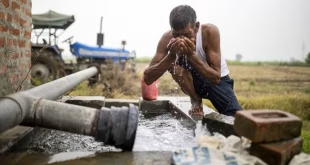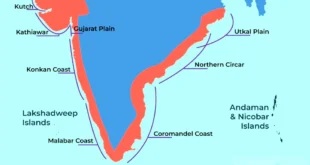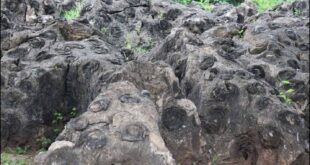- According to UNDP (United Nations Development Programme), the Hindu Kush Himalayan (HKH) mountain ranges could lose up to two-third of its ice by 2100.
- About 2 billion people may face food, water shortages by 2100.
Important points:
- It is often referred to as the ‘Third Pole’, on earth, is spread over 3,500 square kms across eight countries including India, Nepal and China.
- It contains the world’s third-largest storage of frozen water after Antarctica and the Arctic.
- Over 240 million people live in the region’s mountains. 1.7 billion live in the river basins downstream, while food grown in these basins reaches three billion people.
- The glaciers feed at least 10 major river systems, which have bearings on agricultural activities, drinking water and hydroelectricity production in the region.
Challenges:
- According to ICIMOD’s (International Centre for Integrated Mountain Development) 2019 assessment, the HKH region will continue to warm through the 21st century even if the world is able to limit global warming at the agreed 1.5 degrees Celsius.
- The Paris agreement aims to substantially reduce global greenhouse gas emissions in an effort to limit the global temperature increase in this century to 2 degrees Celsius above pre industrial levels, while pursuing the means to limit the increase to 1.5 degrees.
- In the future, even if global warming is kept to 1.5 degrees C above the pre-industrialisation levels, warming in the HKH region is likely to be at least 0.3 degrees C higher, and in the northwest Himalaya and Karakoram at least 0.7 degrees C higher.
- High Mountain Asia (the Asian mountain ranges surrounding the Tibetan Plateau) will lose a substantial part of its cryosphere in the next decades and thus a substantial part of its water storage abilities. This will lead to increased water stress in high mountain areas.
- A cryosphere comprises portions of Earth’s surface where water is in solid form, including sea ice, lake ice, river ice, snow cover, glaciers, ice caps, ice sheets, etc.
Causes for the Melting of Glaciers:
- The melting is driven by larger anthropogenic modifications (i.e. influenced by humans) of the atmosphere.
- The HKH region lies downwind from some of the most heavily polluted places on Earth. This threatens agriculture, climate as well as monsoon patterns.
- It is recommended to shift away from fossil fuel use in energy, transport, and other sectors, while changing diets and agricultural practices to move to net-zero emissions of greenhouse gases.
- The countries in the region need to reduce emissions of black carbon and other air pollutants as well.
SOURCE: THE HINDU,THE ECONOMIC TIMES ,MINT
 Chinmaya IAS Academy – Current Affairs Chinmaya IAS Academy – Current Affairs
Chinmaya IAS Academy – Current Affairs Chinmaya IAS Academy – Current Affairs



